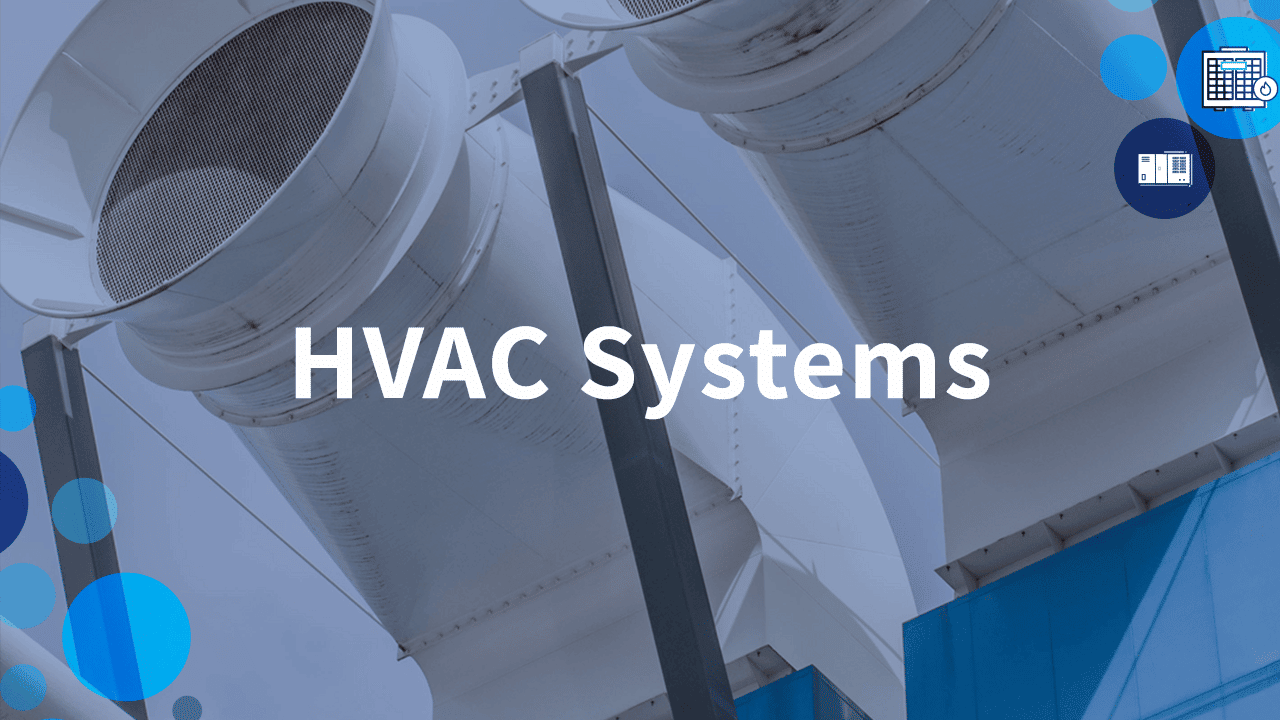Heating, ventilation and air conditioning systems play important roles in maintaining indoor comfort and air quality.
The classification of HVAC systems is necessary to identify both their variations and their application.
Understanding these classifications can help consumers select the right systems for their specific needs, ensuring efficient operation and optimal indoor air quality.
Basic HVAC System Overview
An effective HVAC system serves as a basis of any modern building infrastructure, ensuring indoor environmental comfort.
Understanding the basic functions and components of an HVAC system is paramount for anyone involved in building maintenance, construction or design.
What are the primary functions and key components of HVAC systems?
Keep reading as we shed light on how they work together to create and sustain comfortable and healthy indoor spaces.
Primary Functions of HVAC Systems
HVAC systems are designed to create and maintain a comfortable and healthy indoor environment.
They achieve these goals through three key functions: heating, ventilation and air conditioning.
Each of the functions is vital to the overall efficiency and effectiveness of the HVAC system, contributing to the comfort and health of indoor environments:
- Heating – The heating component, usually a furnace, of an HVAC system is responsible for maintaining warmth during colder months. It ensures a cozy and comfortable environment for both living and working areas.
- Ventilation – Ventilation helps maintain optimal indoor air quality. It involves the exchange of indoor air with outdoor air, removing pollutants, moisture and odors, ensuring a fresh and healthy breathing environment.
- Air Conditioning – HVAC’s air conditioning function cools and dehumidifies indoor air during periods of warmer weather. Air conditioners not only provide comfort but also help maintain an environment conducive to health and productivity.


Components of an HVAC System
An HVAC system includes a variety of components, each playing a specific role in heating, cooling and ventilating a space.
Understanding the following HVAC components is essential for anyone looking to install, maintain or upgrade their system:
- Thermostat – The user interface of the HVAC system instructs it to perform specific tasks. It also helps stabilize temperature, thereby benefiting air quality and humidity levels.
- Heat Exchanger – The heat exchanger component is responsible for transferring heat. It is used in both heating and cooling processes, moving heat from one place to another.
- Evaporator Coil – The evaporator coil absorbs heat from hot indoor air, allowing it to be cooled by refrigerant and distributed through air conditioning.
- Condenser Coil – Playing the opposite role as the evaporator coil, the condenser coil releases hot air outdoors, playing a key role in air circulation and filtration.
- Combustion Chamber (Burner) – The HVAC system component heats cool air when set to heating mode. It ignites air from the furnace with a combustible material to produce heat.
- Blower Motor – Responsible for moving cool or hot air throughout the system’s ductwork, it uses electricity to power a fan that circulates air through the ducts.
Why Classify HVAC Systems?
Classifying HVAC systems ensures uniform terminology, promoting clear communication among professionals.
The common language is needed to accurately discuss system specifications and maintenance requirements.
In terms of system design, classification is also key. It guides engineers and designers to select the most appropriate systems for various types of buildings.
A residential home and a commercial building, for example, don’t share the same HVAC needs. Classification helps identify a suitable system for each.
Compliance with regulations is another important reason to classify HVAC systems. The various HVAC systems must adhere to specific safety and performance standards. Classification makes it easier to determine what regulations apply to a particular system.
Classification Criteria for HVAC Systems
The classification of HVAC systems is based on multiple criteria, which help consumers understand the capabilities, applications and efficiency of different systems.
They also assist professionals in making informed decisions about system selection, installation and maintenance.
What criteria can be used to classify HVAC systems? Some of the most common factors include:
- Function – Systems often are categorized based on their functions, such as heating-only, cooling-only or combined heating and cooling. The classification helps select a system that meets the specific climate control needs of a space.
- System Configuration – Configuration includes classifications like split-system, packaged unit or variable refrigerant flow. The configuration determines how system components are organized and interact with each other.
- Energy Source – HVAC systems can be powered by multiple energy sources, including electric, gas or solar. The choice of fuel source can affect the system’s efficiency, cost and environmental impact.
- Application – Systems are classified based on their application, such as residential, commercial or industrial. Each application has unique requirements that influence the choice of HVAC system.
- Control Method – The control method, whether manual, automatic or smart, defines how the system is operated and managed. Smart controls, for example, offer advanced features like remote access and automated adjustments.
- Efficiency Ratings – Ratings like Seasonal Energy Efficiency Ratio (SEER) and Heating Seasonal Performance Factor (HSPF) indicate the energy efficiency of HVAC systems. Higher ratings usually mean better efficiency and lower operational costs.
- Refrigerants Used – The type of refrigerant used in an HVAC system is another way they are classified. Different refrigerants boast various efficiency levels and environmental impact.
- Environmental Impact and Sustainability Considerations – Systems are increasingly evaluated for their environmental impact. The classification considers factors like energy consumption, emissions and the use of eco-friendly refrigerants.


Further HVAC System Classifications and Subtypes
HVAC classification encompasses various subtypes, each with unique features and applications.
When choosing or maintaining your HVAC system, keep the following subclassifications in mind:
- Conventional Split-Systems – Common in residential settings, these systems consist of an outdoor unit and an indoor unit, connected by refrigerant piping. Variants include multi-split systems, which can have multiple indoor units connected to a single outdoor unit.
- Heat Pumps – Heat pumps are versatile, providing both heating and cooling. The systems are particularly efficient in moderate climates. Types of heat pumps include air-source, water-source and ground-source, each using different heat exchange methods.
- Ductless Mini-Split Systems – Ideal for spaces where traditional ducted systems are impractical, ductless systems offer individual control of specific spaces or rooms, leading to increased energy efficiency and comfort.
- VRF Systems – Sophisticated VRF systems are used mainly in commercial buildings. VRF systems can provide simultaneous heating and cooling to different areas, optimizing comfort and efficiency.
- Rooftop Packaged Units – Commonly found in commercial settings, the units are installed on rooftops and contain all necessary components in a single housing. They are known for their ease of installation and maintenance.
- Geothermal HVAC Systems – Geothermal systems employ Earth’s stable temperature as their heat exchange medium. They are highly efficient and environmentally friendly, suitable for both heating and cooling.
- Industrial HVAC Systems – Designed for large-scale industrial applications, the powerful systems boast higher capacities to handle the demanding requirements of industrial environments.
Other HVAC Classification Systems
HVAC systems are classified not only by their type and function but also by criteria like performance metrics, regulatory standards and technological advancements.
The additional classification systems are essential for a comprehensive understanding of HVAC technologies.
They offer insight into the efficiency, compliance and innovation associated with different systems, playing a crucial role in decision-making processes for HVAC installation, maintenance and upgrades.
Performance Metrics
Understanding the performance metrics of your HVAC system is crucial when evaluating its efficiency and suitability for specific applications.
Performance metrics provide valuable information about how a system operates under various conditions and its overall energy consumption.
The following factors are key when determining the right HVAC system for a particular setting, thus ensuring optimal performance and energy efficiency:
- Efficiency Ratings – Ratings like SEER and HSPF measure how effectively a system uses energy. Systems with higher efficiency ratings are more cost-effective over time, making them a preferred choice for energy-conscious consumers.
- Capacity – Capacity refers to a system’s ability to heat or cool a space. Proper capacity ensures the system efficiently maintains comfortable temperatures.
- Airflow Rates – The rate at which air moves through the system impacts both comfort and efficiency. Proper airflow ensures even temperature distribution and effective filtration.
Regulatory Standards and Codes
Regulatory standards and codes are pivotal in shaping the design, installation and operation of HVAC systems.
Such standards ensure systems meet essential safety, efficiency and environmental requirements.
Adherence to the following is not just about compliance; it’s about ensuring the longevity, safety and efficiency of HVAC installations:
- ASHRAE Standards – Developed by the American Society of Heating, Refrigerating and Air-Conditioning Engineers, these standards are benchmarks for system design and operation, focusing on energy efficiency and indoor air quality.
- ENERGY STAR Certification – Systems with this certification meet strict energy efficiency guidelines set by the U.S. Environmental Protection Agency.
- Local Building Codes – Local codes vary by region and dictate specific requirements for HVAC installation and operation, ensuring safety and compliance.
Recent Advancements in HVAC Classification
The HVAC industry continues to see significant advancements that influence systems’ classification and performance.
The following innovations reflect the industry’s response to evolving demands for energy efficiency, environmental sustainability and user convenience:
- Smart HVAC Controls – Advanced control systems offer enhanced efficiency and user convenience. They allow remote monitoring and control, adapting to user preferences and environmental conditions.
- Green Technologies – Innovations in eco-friendly technologies are reshaping HVAC systems. These can include advancements in renewable energy sources and environmentally friendly refrigerants.
- Energy-Efficient Solutions – The focus on energy efficiency has led to the development of more efficient HVAC models. Such systems use less energy while maintaining high performance, thus reducing both HVAC costs and environmental impact.


HVAC Classification Challenges and Future Trends
The HVAC industry now faces several challenges, including the need for improved energy efficiency, transitions in refrigerant use and adaptation to climate change.
The following challenges drive innovation and shape future HVAC trends in system classification and design.
- Energy Efficiency Improvements – There is a continuous push for systems that consume less energy while delivering optimal performance. The challenge drives development of more efficient technologies.
- Refrigerant Transitions – Based on environmental concerns, the HVAC industry is moving toward refrigerants with lower global warming potential. The transition impacts system design and classification.
- Climate Change Considerations – As climate patterns change, HVAC systems must adapt to handle more extreme weather conditions and temperature variations.
HVAC Classification Systems Are Pivotal Toward Selection, Installation and Maintenance
The classification of HVAC systems represents the industry’s ability to meet diverse needs efficiently and effectively.
From understanding different functions and configurations to recognizing the importance of performance metrics, regulatory standards and recent technological advancements, classification plays a pivotal role.
Classifying HVAC systems entails more than mere technical exercise; it’s a crucial process that aids in making informed decisions.
Whether for installation, maintenance or upgrades, a thorough understanding of these classifications ensures the right system is chosen – one that meets specific needs while adhering to efficiency and environmental standards.












